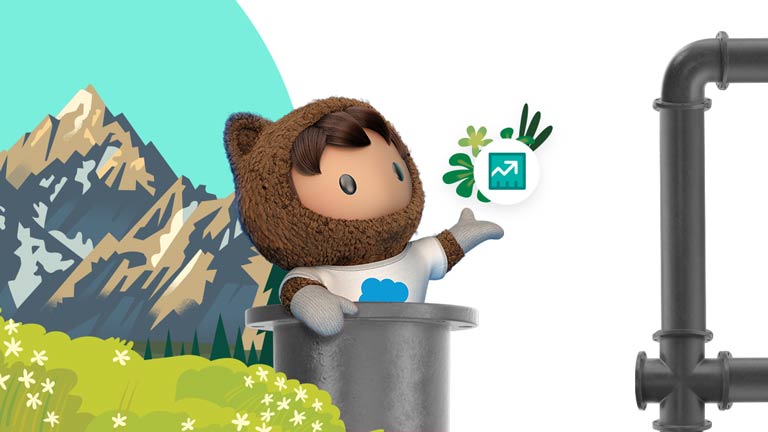Market research done? Check. Prospects qualified? Check.
Looks like you’re ready to make a sales call.
This isn’t just a quick pitch, however. The most successful sales calls include tailored presentations and focus on building trust with prospects by addressing their unique pain points.
As Sue McEvoy, Head of Sales Australia at FCM Travel, says, "Become educators, not sellers. Buyers now expect more than simply to be sold to. They want a trusted advisor, someone who will inform them of current trends."
To ensure you lead a successful sales call, we’ve curated expert tips and techniques below, including guidance on how to prepare. Ready? Set? Sell!
Wait, what is a sales call?

How do you prepare for a sales call?

Set sales call expectations before the actual call.
Before you make the call, determine your prospect’s needs and pain points. This avoids any surprises during the call itself, as you’ve already established alignment with product solutions and set expectations of what’s to come.
This is also an opportunity to tactfully ask who else needs to be involved in the decision-making process before the purchase can be finalised. For larger companies, this often includes legal teams and high-level company executives. Send an advance copy of the contract or a prepared quote so all decision makers can review sales details before the call.

Create a tailored presentation.
In a recent Salesforce study, sales reps reported they often struggle to fully understand their prospects’ needs — in part because they don’t conduct adequate research or hold discovery calls. The result is a generic sales pitch that doesn’t frame the product as a solution to unique prospect problems.
To avoid this, make sure you know each prospect’s needs inside and out. Then create a slide deck or presentation specifically addressing those needs.
Also, keep your prospect’s communication and engagement preferences in mind as you prepare your pitch. Some prefer standard slides while others may enjoy video or interactive content.

Prep a demo.
Determine likely objections and responses.
Make sales call prep easy with Sales Cloud
13 tips for making a successful sales call
1. Record and review your call.
According to a 2021 Salesforce survey, only 32% of sales reps say they receive excellent training or coaching, including training on sales calls. This results in a lot of missed opportunities and, in some cases, botched deals.
To ensure you have the insights needed to master sales calls, make sure each one is recorded on your phone or videoconferencing platform. When calls are complete, review them. Find objections you might have missed or insights you could have added. Tools like Einstein Conversation Insights can even help you analyse commonly used keywords and your listen/talk ratio. You can also share calls with your manager or colleagues for feedback. Remember: Each call is an opportunity to learn, improve, and boost sales.
2. Start with a friendly greeting — but not too friendly.
Many reps make the mistake of launching into their sales pitch too soon. You want to build rapport and comfort with your prospect, and that starts with a friendly greeting — maybe even chitchat.
Make sure you strike a balance, though. Prospects will quickly see through it if you try to be too chummy. Keep your greetings friendly and a couple of minutes long, and then move on to business.
3. Make sure nothing has changed since the last communication.
4. Set call agenda and expectations.

Welcome: Greet and review prospect’s situation
✅ Welcome: Greet and review prospect’s situation
Agenda: Outline the meeting
✅ Agenda: Outline the meeting
Review prospect needs: Confirm pain points
✅ Review prospect needs: Confirm pain points
Product overview: Introduce product features and functions
✅ Product overview: Introduce product features and functions
Product solutions: Explain how your product addresses pain points
✅ Product solutions: Explain how your product addresses pain points
Demo: Showcase product and highlight problem-solving features
✅ Demo: Showcase product and highlight problem-solving features
Questions: Offer additional information (as needed) and address objections
✅ Questions: Offer additional information (as needed) and address objections
Next steps: Outline action items and a timeline for closing the deal
✅ Next steps: Outline action items and a timeline for closing the deal
5. Reiterate pain points.
6. Talk about product value, not features.
As you work your way through your sales pitch, lean heavily on language that favours value and problem-solving. How are you attempting to make your prospect’s life easier or better? Be specific and, if possible, show measurable improvements.
Let’s say you sell travel insurance and are talking to a prospect about insuring an upcoming trip to Europe. You can reference the peace of mind your prospect would feel knowing their investment in plane tickets and hotel reservations is fully refundable if their destination city shuts down due to inclement weather. Even better, you can let them know about special discounts or gifts they would enjoy with the purchase of an insurance plan. Pain removed, pleasure gained.
7. Reference your unique differentiator.
Most products have a healthy helping of competitors in the market. While you may make a compelling case for solving your prospect’s problems, competing products frequently offer similar solutions. To avoid being outshone by other companies, research your competitors in advance and articulate differentiators that clearly elevate your product above others.
“Think about what else you could add to a deal to make it bigger and different to your competitors," says James David, Associate Director of Enterprise Sales at Datacom. "This will also broaden the conversation with your customer on aspects they might not have thought of before.”

8. Use positive language.
What you say matters, but how you say it matters more. This is especially true in sales. In fact, leaning on empathetic, value-based, and positive language is critical to earning prospects’ trust and emotional buy-in. Once these are in place, closing a sale is relatively easy.
For example, instead of using terms like “payment,” which implies debt, use a word like “investment,” which implies ownership and opportunity. Other positive terms like “benefit,” “guarantee,” and “easy” are effective ways of securing buy-in during a sales call.
9. Respond to objections with questions to fully understand each concern.
New sales reps often react defensively when prospects object to a sale — even when the objection is valid. While it’s good to have some responses in the bag to underscore your product’s value, the goal in objection handling is not to fire back with counterpoints.
"The customer doesn't always know what they want. Ask questions and listen," says Charmaine Keegan, Founder, Director and Lead Trainer at Smarter Selling. "Then think about what you can do to help them with their problem."
Here’s an example of how this might play out in a sales call:
10. Actively listen.
11. Balance statistics with stories.
When prospects ask about the effectiveness of your product, it’s common for reps to respond with stats. These can be compelling, but they can also lead to glassy-eyed stares.
“Know your customers, their industry, their personas and the language they actually speak," says Alyssia Tennant, National Sales & Delivery Director at Simplus. "Bring storytelling into your messaging, this allows you to create messages that resonate, which will speed up the sales cycle.”
There are exceptions, though. If you sense that the person making the final purchasing decision is analytical in nature, make sure to include some clear statistics that support your narrative.

12. Don’t leave the call without a “yes.”
One of the biggest mistakes new reps make is leaving sales calls open-ended. Prospects frequently respond to pitches with a casual, “I’ll think about it.” New reps, aiming to please, agree to give them space for deliberation. Inevitably, however, prospects are caught up in other responsibilities and forget about the sale.
To avoid this, close the call with a couple of direct questions/comments:
- “You’ve highlighted X and Y as problems for your business. We’ve just taken a look at the product and how it can solve those problems. Do you agree it’s a good solution for you?”
- “Great. It sounds like we’re on the same page. To take care of your problems ASAP with the solution we’ve discussed, all we need to do is take care of some easy paperwork and we’ll get you onboarded immediately. Sound good?”
If a prospect doesn't commit, make sure they are aware of the cost of inaction. Explain the cost in time, money, and labour if they wait to make a purchase decision. When they recognise the consequences of waiting, securing a “yes” to the sale becomes easier.
13. Close with next steps, including a timeline for follow-up.
More Resources

How AI Marketing is Changing Digital Marketing Today

The B2B Marketing Guide to Drive Business Growth








